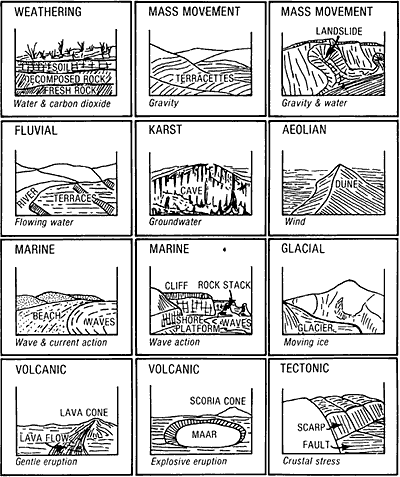Morphology and Process
Landforms as well as having morphological characteristics (surface dimensions) have been formed by processes. Many landform types are defined by process, such as dunes and karst topography. Dunes for example may fit into a number of relative relief classes but are distinguished by their composition and formation process.
The processes mentioned earlier in the introduction (also see Jenkin in Cochrane et al, 1991, Chapter 3, pp 58-64) can interact to produce an array of landforms. For example, plains can be separated into depositional plains of various kinds or erosional surfaces (peneplain).

Major Geomorphic Processes (source: Jenkin in Cochrane et al. 1991, p.59)
Landforms are described as landform patterns at the broader scale while the units that make up these patterns are described as components. Speight (see Landform chapter in McDonald et al (1990) p34) describes landform patterns (broad landforms) in terms of relief, modal slope, stream channel occurrence, mode of geomorphological activity, geomorphological agent, status of geomorphology activity and component landform elements. Whilst landform elements (components of landforms) are described in terms of slope, morphological type, dimensions, mode of geomorphological activity and geomorphological agent.
In summary, landforms can be described in terms of their morphology and process.


